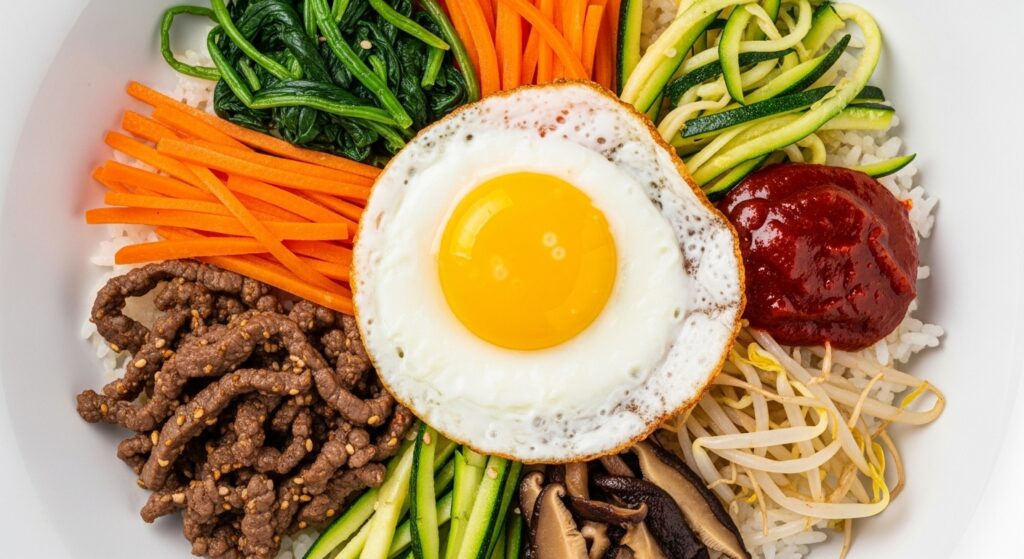A First Taste of Korean Hospitality

When foreigners think of Korean food, barbecue often comes to mind. Among the many dishes cooked over fire, bulgogi — thinly sliced beef marinated in a sweet and savory sauce — holds a special place. For first-time visitors to Korea, tasting bulgogi is often their introduction not only to the cuisine, but also to the warmth of Korean dining culture.
Walking into a Korean restaurant, you’ll notice the atmosphere immediately: sizzling sounds from the grill, the aroma of garlic and sesame oil, and groups of friends gathered around tables. Bulgogi is not just food — it is part of an experience that combines flavor, tradition, and community.
The Ritual of Korean BBQ

For many foreigners, the biggest surprise is that eating bulgogi is interactive. The meat doesn’t arrive fully cooked from the kitchen. Instead, it is grilled at the table, often by diners themselves. One person uses tongs to flip the beef, another prepares lettuce leaves, while others scoop kimchi or garlic onto their plates.
This shared cooking ritual reflects a central idea in Korean dining: food is best enjoyed together. For foreigners, it feels both unfamiliar and exciting — the table becomes a stage where cooking and conversation happen at the same time.
Why Bulgogi Stands Out
Compared to other BBQ dishes, bulgogi is especially foreigner-friendly. The marinade of soy sauce, sugar, garlic, and sesame oil creates a flavor profile that is both rich and approachable. It is sweet enough to please children, yet savory enough to satisfy adults.
Foreigners often describe bulgogi as “comforting” — less spicy than gochujang-based dishes but still bursting with character. Served with rice, lettuce wraps (ssam), and a variety of side dishes (banchan), it offers a complete Korean meal in one sitting.
To complete a truly authentic Korean meal, pair your bulgogi with Japchae (Korean Glass Noodle Stir-Fry). Its sweet and savory flavors complement the marinated beef beautifully, creating a balanced feast.
A Cultural Window for Foreigners

Eating bulgogi is more than satisfying hunger; it is a way to understand Korean values. The communal grill highlights togetherness. The balanced marinade represents the Korean love of harmony in flavors. Even the way bulgogi is wrapped in lettuce with garlic and kimchi reflects the culture’s emphasis on balance between indulgence and health.
For foreigners, these small details turn bulgogi into a cultural lesson as much as a culinary one. Many leave Korea saying that their fondest memories are not only the food itself, but the laughter and stories shared around the grill.
Bulgogi Beyond Korea

Today, bulgogi is one of the most exported Korean dishes. In cities like New York, Los Angeles, and London, Korean BBQ restaurants are packed with diners eager to grill marinated beef at their tables. The global popularity shows how bulgogi has crossed cultural boundaries — it is no longer only a Korean dish, but also a global ambassador of Korean hospitality.
Some chefs abroad even experiment with bulgogi tacos, burgers, or pizza toppings. These creative twists show how versatile the dish can be, while still keeping its original Korean soul.
Try It Yourself
Of course, you don’t have to fly to Korea to taste bulgogi. With thin beef slices, soy sauce, garlic, sugar, and sesame oil, you can recreate it in your own kitchen. The key is the marinade — letting the meat soak up the flavors before grilling or pan-frying.
👉 If you’d like to try, check the recipe card below for a simple step-by-step guide to making authentic bulgogi at home.
Conclusion
Bulgogi is more than just marinated beef. For foreigners, it is an invitation to experience Korean dining culture — the sizzling grill, the shared laughter, and the harmony of flavors. Whether you enjoy it in a bustling Seoul restaurant, at a Korean BBQ abroad, or in your own kitchen, bulgogi offers not just taste but also a window into Korea’s way of life.
👉 Next time you think of Korean food, remember bulgogi — a dish where fire, flavor, and friendship come together.
“If you enjoy smoky Korean barbecue flavors, try my Samgyeopsal (Grilled Pork Belly) recipe — rich, crispy, and satisfying.”

Korean Bulgogi (Marinated Beef BBQ)
Equipment
- 1 Mixing bowl For marinating beef
- 1 Frying pan or grill pan For cooking
- 1 Knife & cutting board For slicing beef and vegetables
Ingredients
- 300 g Beef (ribeye or sirloin, thinly sliced) Main ingredient
- ½ Onion Sliced thinly
- 1 Carrot Julienned (optional)
- 2 Green onions Sliced
- 2 tbsp Soy sauce Base of marinade
- 2 tbsp Sugar (or honey) Sweetness
- 1 tbsp Sesame oil Aroma
- 2 tsp Garlic, minced Flavor
- 1 tsp Ginger, minced Optional, for depth
- 1 tsp Sesame seeds Garnish
- Black pepper To taste
Instructions
- Place thinly sliced beef in a mixing bowl.
- Add soy sauce, sugar, garlic, sesame oil, ginger, and black pepper. Mix well.
- Add onion, carrot, and green onions to the marinade.
- Cover and marinate for at least 30 minutes (longer = better flavor).
- Heat a frying pan or grill pan over medium-high heat.
- Cook marinated beef and vegetables until the beef is fully cooked and tender.
- Sprinkle sesame seeds before serving.
- Enjoy with steamed rice or wrapped in lettuce leaves.


